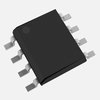-
A good PCB layout for the LT1228CS8 involves keeping the input and output traces short and wide, using a solid ground plane, and placing the input and output capacitors close to the device. Additionally, it's recommended to use a low-ESR capacitor for the output filter capacitor.
-
To ensure stability and prevent oscillations, it's essential to follow the recommended component values and PCB layout guidelines. Additionally, make sure to use a sufficient output capacitor value and ensure that the output voltage is within the recommended range. Also, avoid using long input traces and keep the input and output grounds separate.
-
The maximum ambient temperature range for the LT1228CS8 is -40°C to 85°C. However, the device can operate at a junction temperature up to 125°C. It's essential to ensure proper thermal management to prevent overheating.
-
Yes, the LT1228CS8 is suitable for high-reliability and aerospace applications. It's manufactured using a proprietary BiCMOS process and is designed to meet the requirements of high-reliability applications. However, it's essential to follow the recommended operating conditions and ensure proper thermal management.
-
To troubleshoot common issues with the LT1228CS8, start by checking the PCB layout and component values against the recommended values in the datasheet. Ensure that the input and output capacitors are of sufficient value and that the output voltage is within the recommended range. Also, check for any signs of overheating or thermal issues. If the issue persists, consult the datasheet and application notes for further guidance.
 LT1228CS8#PBF datasheet
by Linear Technology
LT1228CS8#PBF datasheet
by Linear Technology
